Operator Royal Air Force Identifiers ICAO: EGWE Year built 1918 | In use 1918–Present Elevation 47 m Owner Ministry of Defence | |
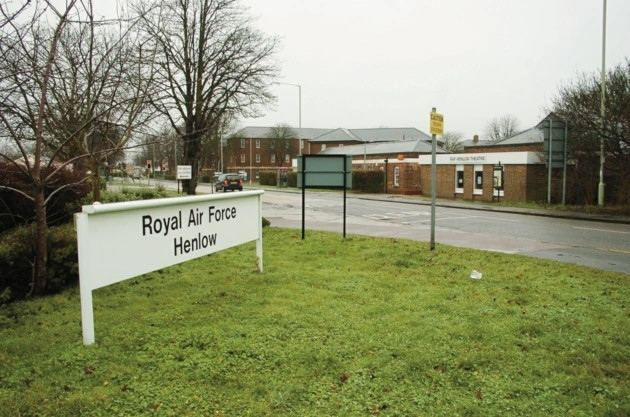 | ||
Type Royal Air Force station Built by McAlpine (1918)
various since 02/20 1,179 metres (3,868 ft) Grass | ||
RAF Henlow is a Royal Air Force station in Bedfordshire, England, equidistant from Bedford, Luton and Stevenage. It houses the RAF Centre of Aviation Medicine, the Joint Arms Control Implementation Group (JACIG), the Signals Museum and 616 Volunteer Gliding Squadron. The Ministry of Defence announced on 6 September 2016 that the base is set to be closed following a consultation.
Contents
- Signal museum raf henlow
- History
- Present
- Facilities
- Cadets
- Operational units
- The Signals Museum
- Planned Closure
- References

Signal museum raf henlow
History
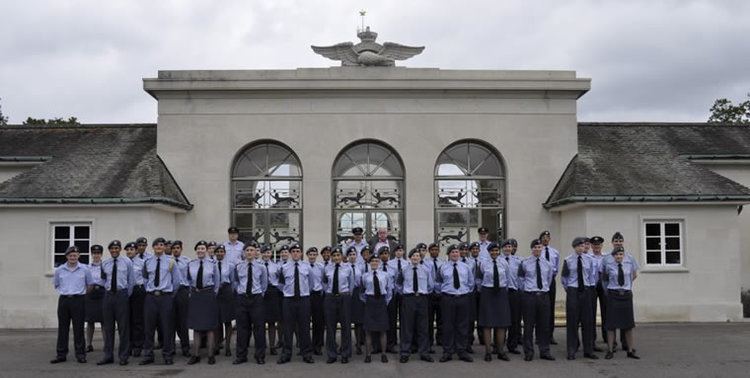
Henlow was chosen as a military aircraft repair depot in 1917 and was built by MacAlpine during 1918. 4 Belfast Hangars were built and are now listed buildings. An additional hangar was added to the inventory in the 1930s and this too is now listed. Originally a repair depot for aircraft from the Western Front, the Station officially opened on 18 May 1918 when Lt Col Robert Francis Stapleton-Cotton arrived with a party of 40 airmen from Farnborough. In May 1920, RAF Henlow became the first parachute testing centre and was later joined by another parachute unit from RAF Northolt. Parachute testing was undertaken with Vimy aircraft and parachutists hanging off the wings and allowing the chute to deploy and enable them to drift back to the ground. The Officers Engineering School moved there in 1924 from Farnborough.

After the First World War, Henlow was home to four aircraft squadrons; No. 19 Squadron RAF, No. 23 Squadron RAF, No. 43 Squadron RAF and No. 80 Squadron RAF. Between 1932 and 1933, Sir Frank Whittle was a student at the RAF technical College on the base. He later spent some time in charge of aero engine testing on the base before being sent to Cambridge.
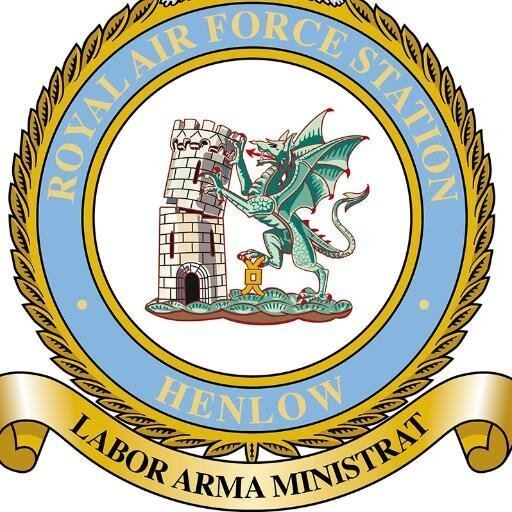
During the Second World War Henlow was used to assemble the Hawker Hurricanes which had been built at the Hurricane factory operated by Canadian Car and Foundry in Fort William, Ontario, Canada, under the leadership of Elsie MacGill. After test flying in Fort William, they were disassembled and sent to Henlow in shipping containers and reassembled. During Operation Quickforce in 1941, 100 fitters from the base were deployed onto carriers which were shipping Hurricane fighters to Malta. The finished Hurricanes were completed on the decks of the carriers and flown out to Malta. Over 1,000 Hurricanes (about 10% of the total) were built by Canadian Car and Foundry and shipped to Henlow. Henlow was also used as a repair base for many aircraft types under the direction of No. 13 Maintenance Unit.
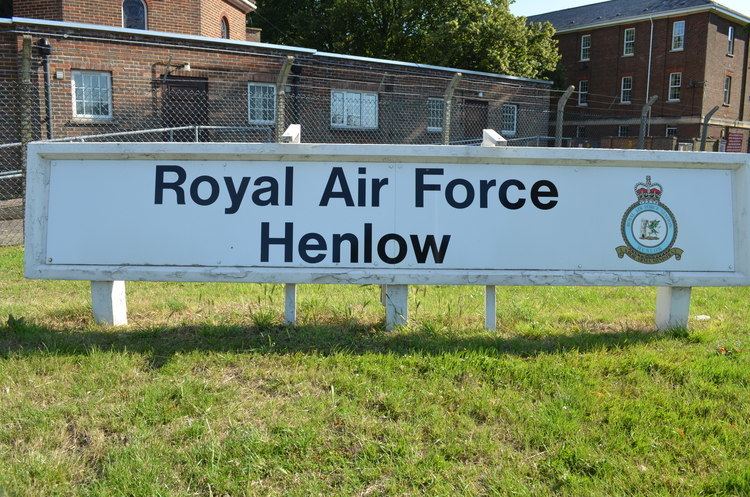
The empty packing crates that the Hurricane aircraft were shipped in were used to make the control tower on the base. The tower and parts of the airfield were used in several scenes in the Second World War film The Battle of Britain.
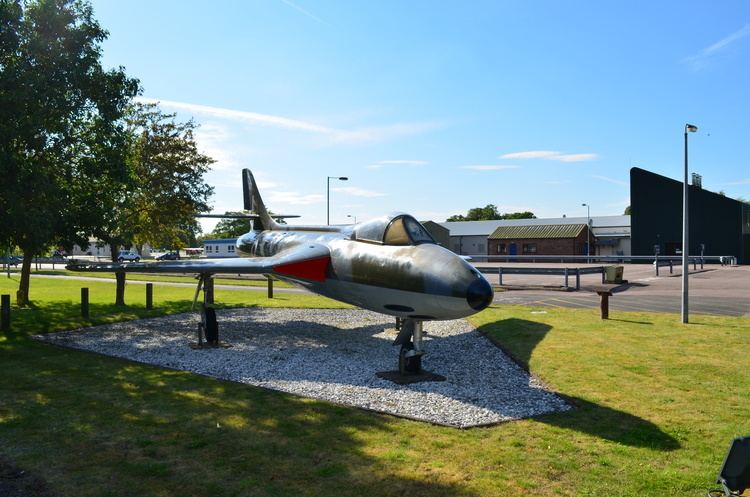
After the war, Henlow became the RAF Signals Engineering Establishment, but was reduced to a Radio Engineering Unit in 1980.
A major RAF technical training college was also formed at Henlow in 1947. This was formed from the RAF School of Aeronautical Engineering, formerly at RAF Farnborough, and its purpose was to train cadets and engineering officers. The college was amalgamated with RAF College Cranwell in 1965. The RAF Officer Cadet Training Unit then moved in, but this also moved to Cranwell in 1980. In 1983, the Land Registry took over part of the site. The missile-corporation MBDA has recently test-fired CAMM missiles from a truck at Henlow.
Henlow Camp, a civilian settlement, has grown up around RAF Henlow since the station's establishment.
In December 2011, RAF Henlow along with 14 other Ministry of Defence sites in the United Kingdom were designated as being dangerously radioactive. The 15 bases were believed to be poisoned as a consequence of undetermined activity during the Second World War.
Present
Today, RAF Henlow houses the Joint Arms Control Implementation Group (JACIG), elements of the RAF'S Police Wings, the RAF Centre for Aviation Medicine (RAF CAM), DE&S, 616 Volunteer Gliding Squadron which operates Vigilant T1 motor gliders. The Minden Band of The Queen's Division (British Army) are stationed at RAF Henlow. A civilian flying school also operates from the site. No 3 Tactical Provost Squadron was formerly based at RAF Henlow, gradually transitioned over to Royal Air Force Honington in 2015.
Administratively, RAF Henlow was part of a combined base, RAF Brampton Wyton Henlow but this has been disbanded with RAF Brampton being closed.
Facilities
Henlow facilities include a Medical and Dental Centre, Officers' Mess, WOs' and Sgts' Mess, Junior Ranks Club - 'Whittles', Junior Ranks Mess and Coffee Shop - 'Crystals', Welfare housing - 'Whittle's Inn', Gymnasium, Swimming pool, bowling alley, an 8 runway grass airfield and a 9-hole golf course open to the public.
Cadets
RAF Henlow is also home to 2482 (Henlow) Sqn Air Training Corps.
Operational units
The Signals Museum
The Signals Museum is focused on the development of electronic communications by the RAF since World War I. Exhibits include radio and electronic equipment and memorabilia, a typical RAF Y Station from World War II, and the training of Aircraft Apprentices and boy entrants for Signals and Communications trades.
The museum is open on Tuesdays and also by appointment. Because of the Museum's location on a working air base, all visitors must present a photo ID for entry.
The Museum is also open on the first Saturday of each month (except in January). Opening times are 10.00 to 16.00 (10 am to 4 pm). No booking is needed on these days, but photo ID has to be presented at the Main Guard Room for Temporary Passes to be issued.
Planned Closure
On 6 September 2016, UK Defence Secretary Michael Fallon announced the planned closure of RAF Henlow along with 12 other military sites owned by the MoD. The land will be used for housing to help meet the government's target of 160,000 homes by 2020.
